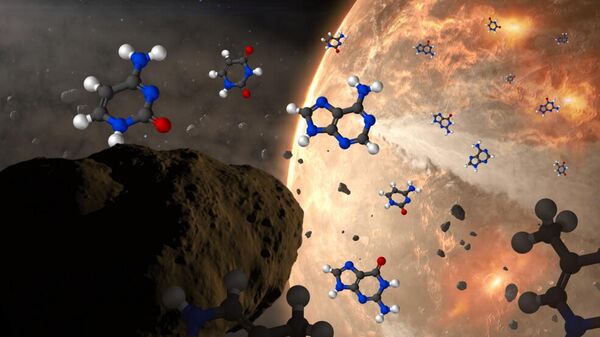
< br />MOSCOW, April 5According to modern ideas, life as we know it was preceded by the world of RNA molecules. This concept was created by an outstanding scientist, one of the founding fathers of molecular biology, Academician A.S. Spirin.
asked his students and colleagues from the Institute of Protein of the Russian Academy of Sciences — head of the laboratory of biochemistry of viral RNAs, corresponding member of the Russian Academy of Sciences Alexander Chetverin — to tell about this and Doctor of Biological Sciences Elena Chetverina. Interviewed by Tatiana Pichugina.
— Three main biopolymers form life — DNA, RNA and proteins. DNA stores genetic information, it is like a safe. We received a successful variant and transferred it into DNA form, where it remains unchanged for many generations. In this series, RNA is a unique molecule. Like DNA, it carries genetic information, but it also evolves quickly. RNA can serve as a template for the synthesis of protein, DNA and itself. Unlike DNA and proteins, RNA is self-sufficient. In 1982, it was discovered that it can catalyze, that is, accelerate, biochemical reactions. In 2000, it was established that it is RNA that catalyzes the formation of peptide bonds, leading to the synthesis of proteins. Then it became obvious to Alexander Sergeevich Spirin that life originated in the form of RNA, and he began to develop his concept.
— Alexander Borisovich, who is the author of the idea?
— It is believed that the Englishman Francis Crick, one of the discoverers of the double helix of DNA, and the American Leslie Orgel wrote about this before anyone else, in 1968. However, 11 years earlier, the same idea was expressed by the Soviet biochemist, Spirin’s teacher, academician Andrei Nikolaevich Belozersky. And although it was at an international symposium on the origin of life, the West did not notice it.
Spirin developed the idea into a concept, relying on our developments.
“
“It seems that RNA, associated with the most general manifestations of life, was formed at an earlier stage in the development of life, while the emergence of DNA is associated with the formation of narrower and phylogenetically later properties of organisms.” (A. N. Belozersky, Moscow International Symposium “The Origin of Life on Earth,” 1957)
— At what point does RNA appear and what precedes it?
— First, you need nucleotides (organic compounds that make up RNA and DNA. — Ed.). They could be synthesized spontaneously, for example, during lightning discharges in an oxygen-free atmosphere. In 1992, it was discovered that modified nucleotides are capable of combining themselves into short oligonucleotides. Then we in Pushchino discovered that spontaneous (spontaneous) recombination is possible between RNA molecules, leading to their unification and exchange of sections. Spirin suggested that this reaction served as the primary way for the emergence of RNA molecules. Through spontaneous recombination, short oligonucleotides were combined into long RNA molecules.
But in order for randomly generated RNA molecules to produce offspring, they need replication — copying according to the principle of complementarity.
Spirin proposed such a mechanism. A long template was formed, and on it a complementary chain was assembled from short oligonucleotides through the spontaneous combining reactions we discovered. But there is a problem. As a result, a double-stranded (double-stranded) molecule was formed, which, like DNA, was a double helix. However, such RNA is inert; all coding valences are occupied. Therefore it cannot serve as a matrix. A single-chain molecule is needed. This means that double-stranded RNA must be unwoven into its component chains. Spirin concluded that it is impossible to do without a molecular machine.
— What kind of molecular machine is this?
— Spirin came to the idea of molecular machines while studying ribosomes — cellular particles that synthesize proteins. They consist of two halves — small and large subparticles. According to the model proposed by Spirin back in 1968, each cycle of growing a polypeptide chain with a new amino acid is accompanied by the opening and closing of these halves and the movement of the ribosome along the messenger RNA by one triplet — three nucleotides encoding this amino acid. But the ribosome is a huge particle with a mass of about three million daltons. For comparison: a water molecule is 18 daltons. What makes this «machine» work? What is its fuel?
It has been suggested that it is GTP (guanosine triphosphate), which is consumed by the ribosome in the same way that ATP (adenosine triphosphate) is used during muscle contraction. However, it turned out that the ribosome works without GTP, only more slowly.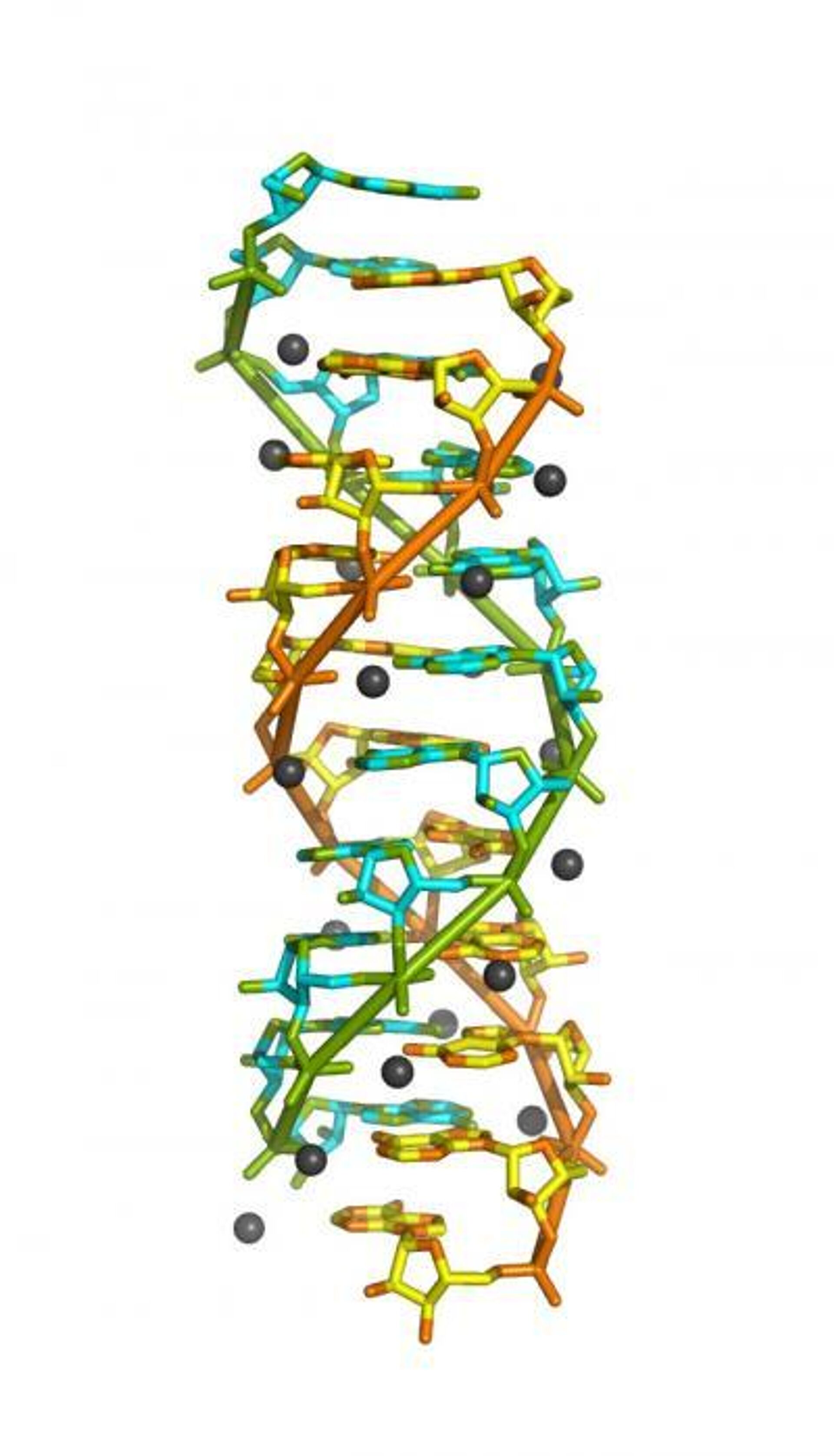 < br />
< br />
The only available source of energy is the thermal (Brownian) motion of solvent molecules, mainly water, bombarding the ribosome. Moreover, it turned out that the total power received by the ribosome from these impacts is billions of times greater than what comes from GTP. But such attacks are chaotic, only some of them are useful. This means that we need some kind of Feynman “ratchet” that “filters” the impacts and ensures the movement of the ribosome along the messenger RNA in a certain direction.
Spirin showed that such a ratchet is the synthesis of the polypeptide itself. This is an irreversible unidirectional process. You can compare him to a traffic controller at an intersection.
In principle, this problem can be solved in another way. For example, in the well-known PCR (polymerase chain reaction) process, widely used, in particular, for diagnosing infections, periodic changes in temperature help. At a relatively low temperature (50-60 degrees), DNA chains are copied, and at a high temperature (about 100 degrees), the resulting double-stranded molecules are unraveled, which guarantees the continuation of the DNA synthesis process in the next cycle.
Probably, on the cosmic body where the RNA world was born, there were the necessary daily temperature fluctuations, and this body itself was an analogue of a giant PCR machine. However, such a machine worked very slowly — one cycle per day. Further evolution required acceleration, and molecular machines were needed.
The first could be an RNA molecule capable of catalyzing the assembly of a chain that is complementary to the template — the prototype of modern RNA polymerase. While the primary RNA polymerase was small, it had to wait for the day to come and the double-stranded RNAs it synthesized to unwind.
It should be noted here that a double-stranded DNA or RNA molecule unwinds with increasing temperature due to an increase in the total power of impacts of solvent molecules on it. This can be achieved not only by increasing the temperature, but also by increasing the size of the target.
As its size increased through evolution, RNA polymerase began to turn into a molecular machine capable of catching Brownian motion, like a sail catching the wind, and unwinding the double-stranded RNA associated with it. Gradually, unwinding occurred at lower and lower temperatures, and finally the entire process of RNA replication was possible at a constant temperature. The ratchet in this situation was the irreversible synthesis of the complementary chain.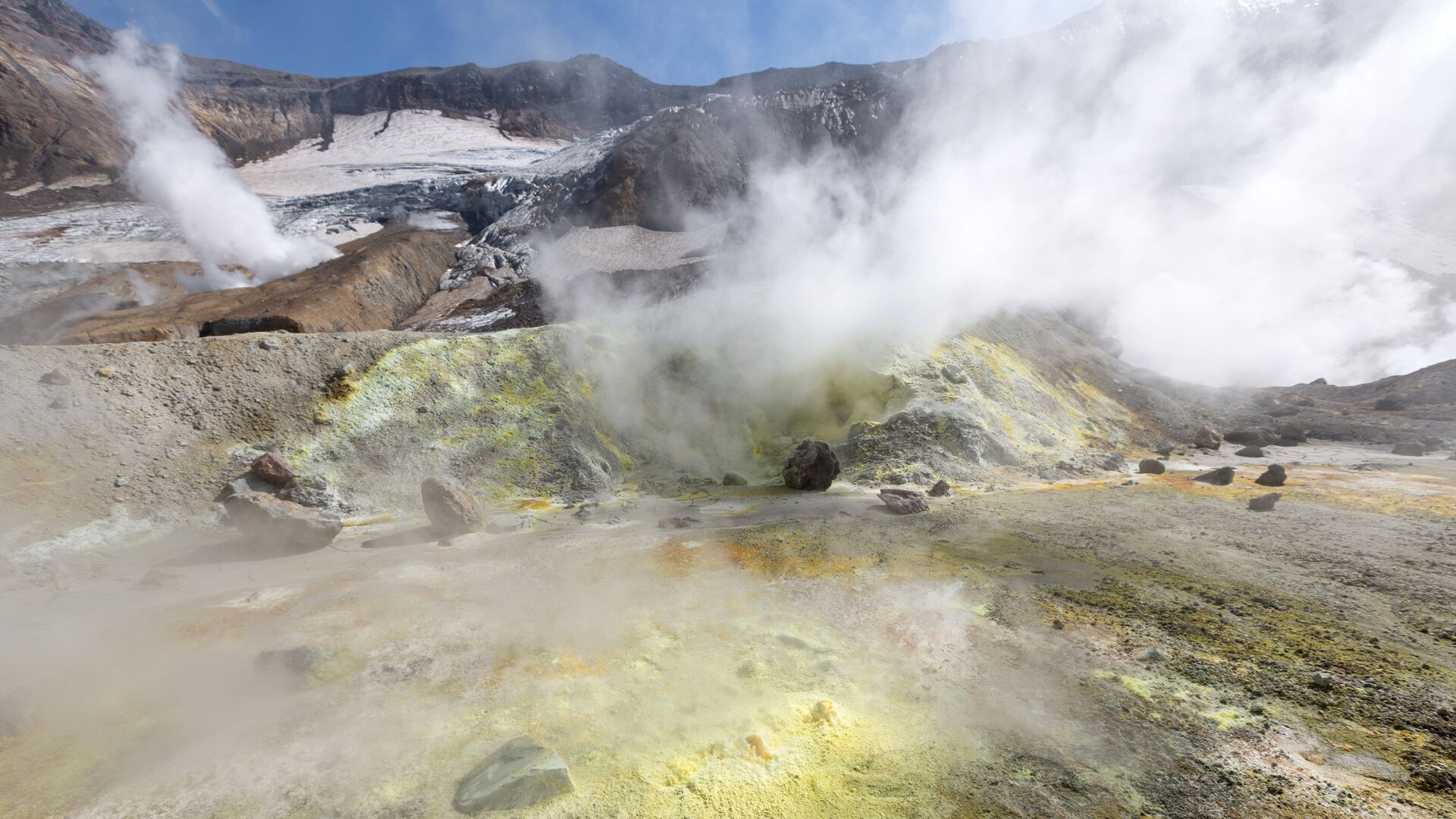
— These are very complex processes.
— Complex, but Spirin proceeded from the fact that life exists, which means it somehow arose. All this took a huge amount of time. For development, it is necessary that molecules with beneficial properties be preserved and multiplied. That is, evolution took place. Darwin believed that life began in a warm little pond. However, it would not select the best RNA molecules. If, for example, RNA polymerase arose in a pond, it would replicate not only the best RNA molecules with properties useful for the population, but also the useless ones, of which there are much more.
“
"In a warm small pond containing sets of ammonium and phosphorus salts, in the presence of light, heat, electricity and the like, one can imagine the chemical formation of a protein component, which would then undergo even greater complexity.” (Charles Darwin, «Principia», 1871)

— That is, you need protocell?
— Yes, compartmentalization, that is, the separation of ensembles of molecules. So that ensembles of those molecules whose properties complement each other better would multiply preferentially. This idea was first expressed by the Soviet biochemist, academician Alexander Ivanovich Oparin. He believed that primary compartmentalization took place in protein clots—coacervate droplets. I got them experimentally. But in the RNA world there were no proteins yet and coacervates could not form. American Jack Shostak, later a Nobel laureate, suggested that the separation occurred in liposomes — droplets surrounded by a lipid membrane. But there were no lipids in the RNA world either. In addition, the lipid membrane is impermeable to soluble substances, including nucleotides from which RNA molecules are built. In a modern cell, this barrier is overcome by special proteins that form channels for the transport of such substances. But then this mechanism did not exist.
Another discovery of ours came in handy here—molecular colonies. They arise in the same way as cellular ones when bacteria are plated on agar. Only we impregnated agarose with polymerase (we worked with viral Qβ replicase) and seeded RNA molecules. In place of each molecule stuck in the gel matrix, a colony of its exact copies grew. We have shown that molecular colonies can be used for RNA and DNA cloning, as well as for diagnostics. Moreover, the diagnostic accuracy is higher than with liquid PCR. Now our method is used in next-generation genome sequencing technology.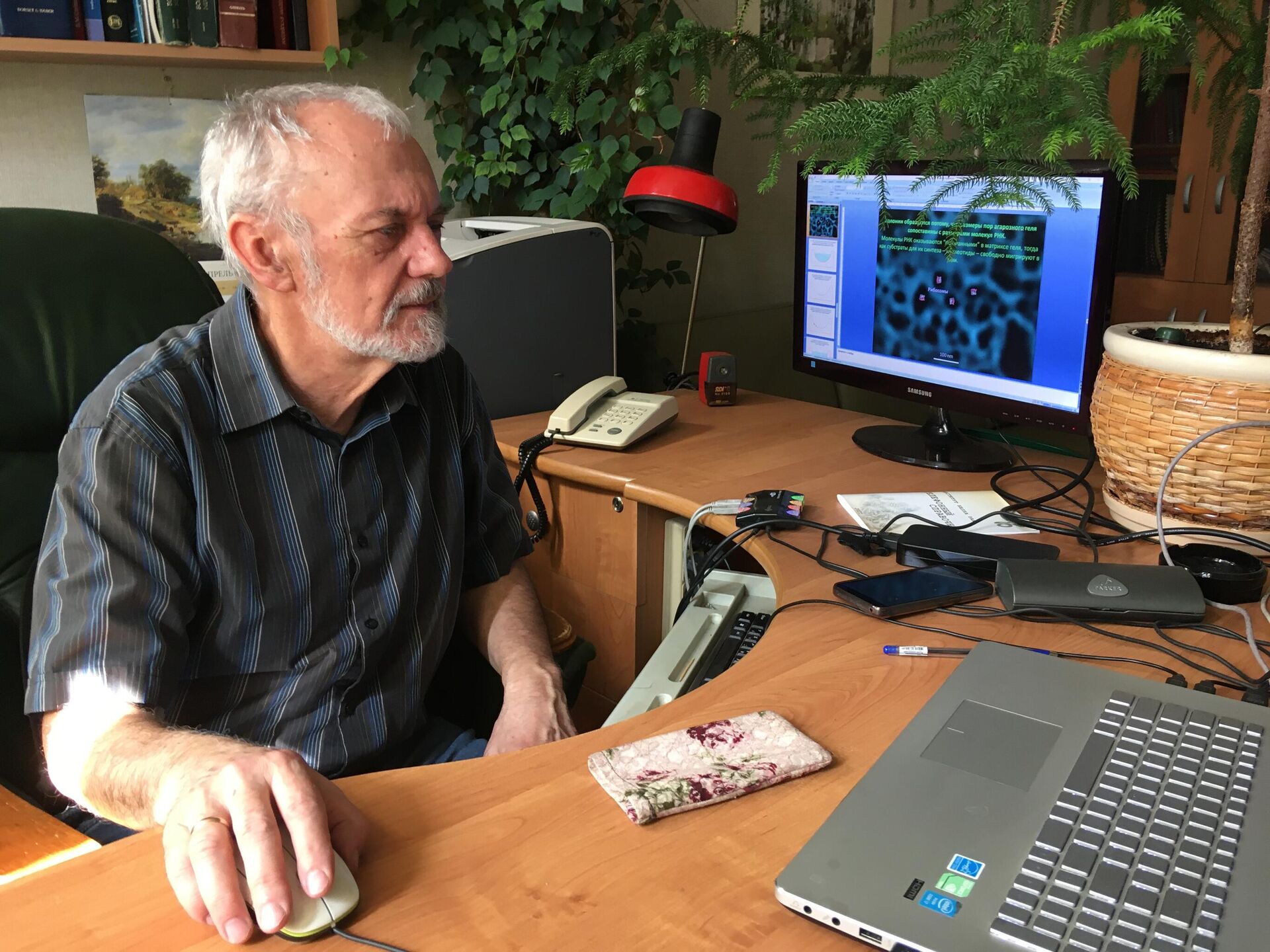
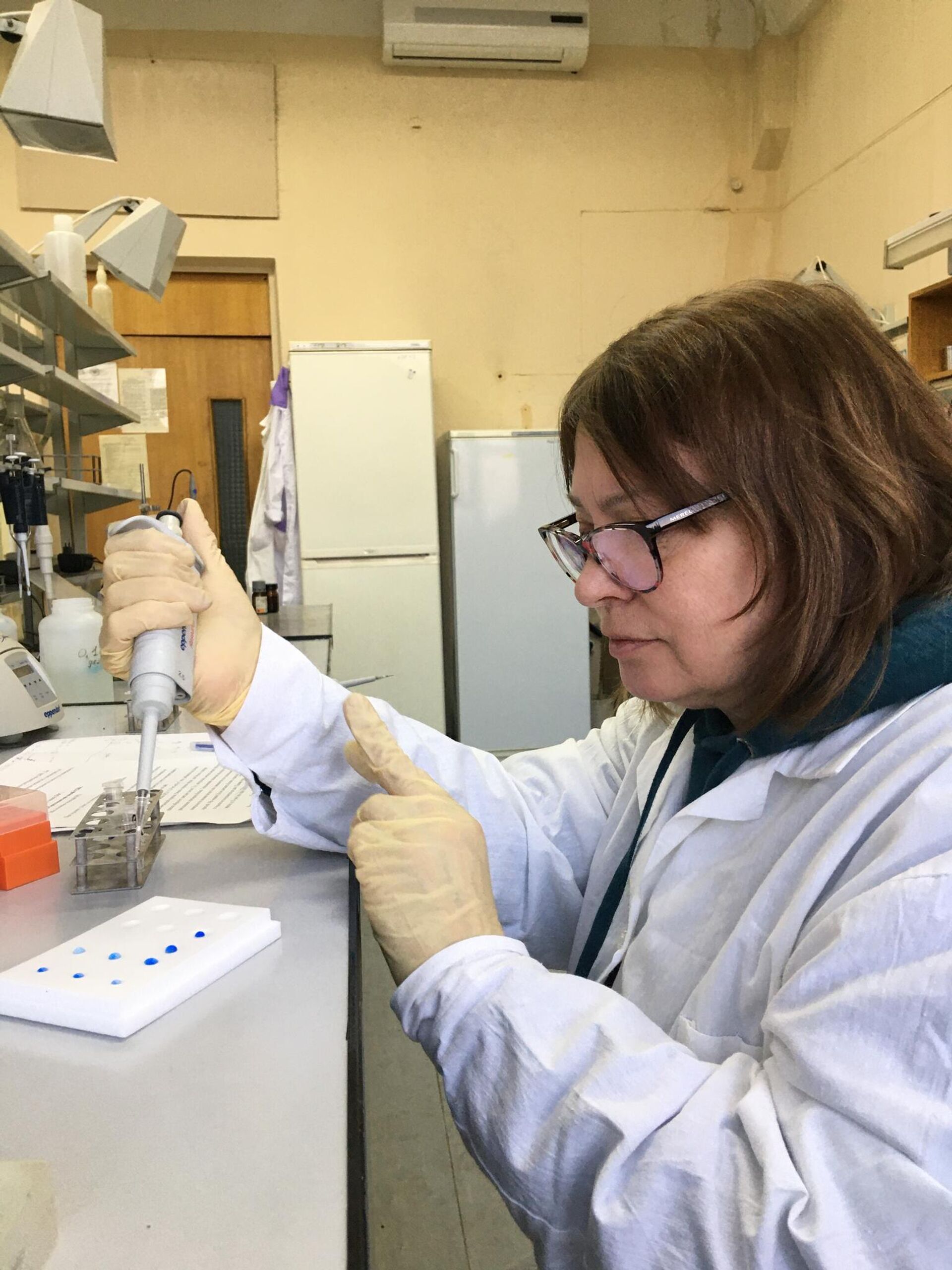
Spirin suggested that the most natural way of compartmentalization in the RNA world is through colonies of molecules growing in clay at the bottom of a periodically drying Darwinian pond. Let’s say that ribozymes (RNA with the function of an enzyme. — Editor’s note) were accidentally formed, the pond dried up, the molecules penetrated into the clay, and formed colonies. Another rainstorm, the colonies partially dissolved, and when the pond dried out, they took a different position on the clay and grew in other places. Natural selection could already be at work here.
— Did this happen on Earth?
— Spirin thought it was unlikely. Most likely, RNA was carried by meteorites.
— From another planet?
— It’s not clear. From somewhere in outer space.
— Let us assume, however, that this happened on Earth. Its age is 4.5 billion years. At first it was a hot, boiling ball, with strong volcanism, a sulfuric atmosphere, it is unclear whether there was water there.
— It is believed that water was brought to Earth by comets.
—The first organisms appeared about four billion years ago. It turns out that life arose in just half a billion years. Is this enough?
— In fact, the time is even shorter — about 100 million years. This is not enough. Spirin was inclined to believe that developed RNA molecules came to Earth, having gone through a rather long path of evolution.
— What should we see in meteorites and cometary matter in order to believe in the reality of the RNA world? Quite a lot of organic molecules, first building blocks, are found there.
— We can only see a set of some substances there. This is not the RNA world as Spirin understands it. Let's say a short oligonucleotide. This doesn't prove anything. If we were to analyze meteorites that have a chronological timeline, we would see some tendency to change or move closer to what we consider the RNA world. But we analyze many meteorites without knowing where they come from, what age they are, or in what sequence they were formed.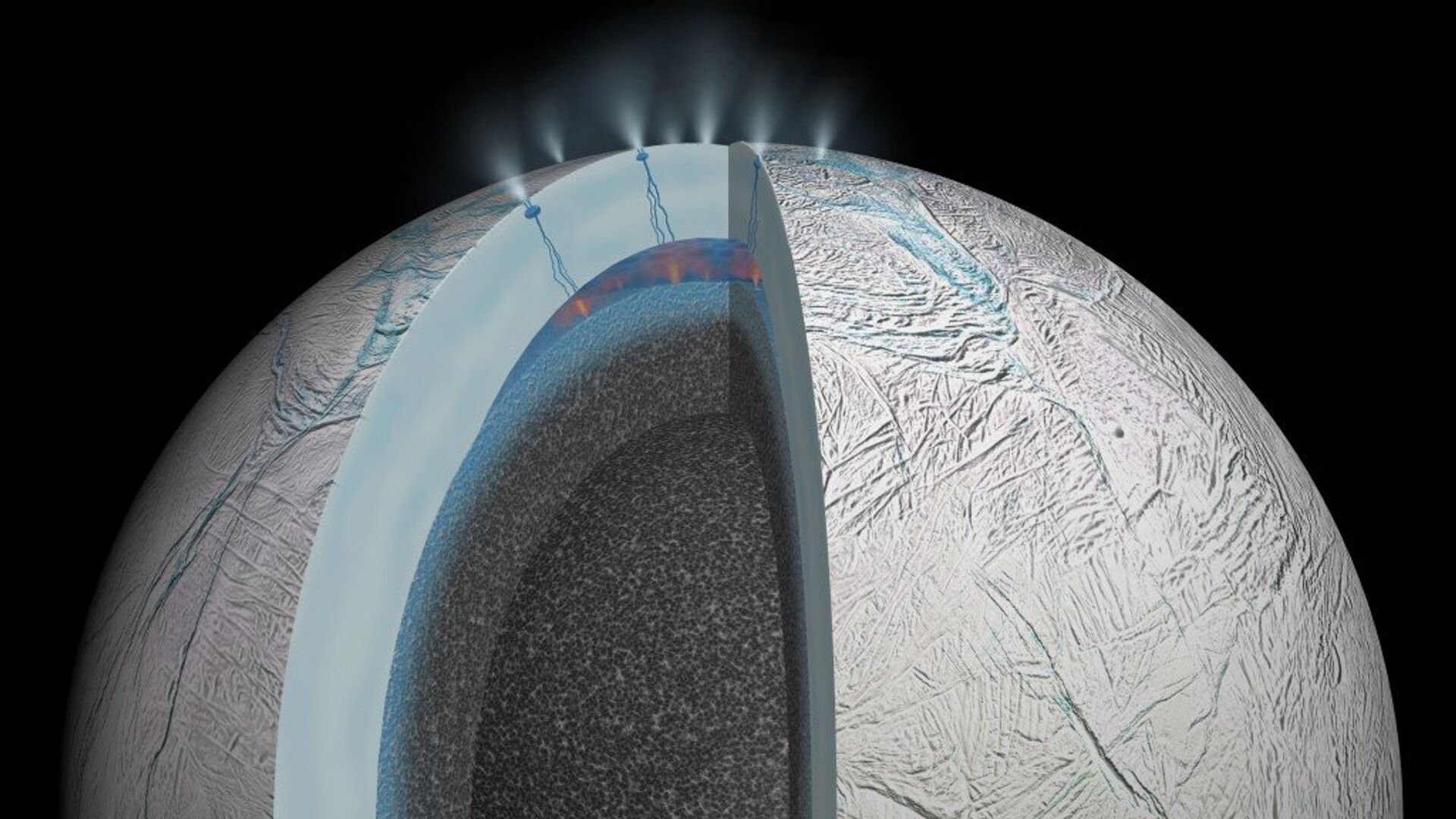
— Has the idea of the RNA world been experimentally confirmed?
— These processes are very slow, ineffective, and take millions of years. You can’t do that in a laboratory.
— Experimental work is still published from time to time. One recent one by Gerald Joyce of the Salk Institute talks about an RNA enzyme that can accurately copy strands of RNA and yet allows evolution.
— Experimenters use methods that did not exist on the primordial Earth. They take on the role of God. This cannot be called a natural process.
— Don't they demonstrate that this could be evolution?
— If Joyce or Shostak were there, who ensured the selection of molecules with positive traits, then it would be artificial selection. And where is it? The potential place of origin is the entire space; no one knows where the most optimal conditions have developed. Spirin's merit is that he formulated the principles by which evolution could begin.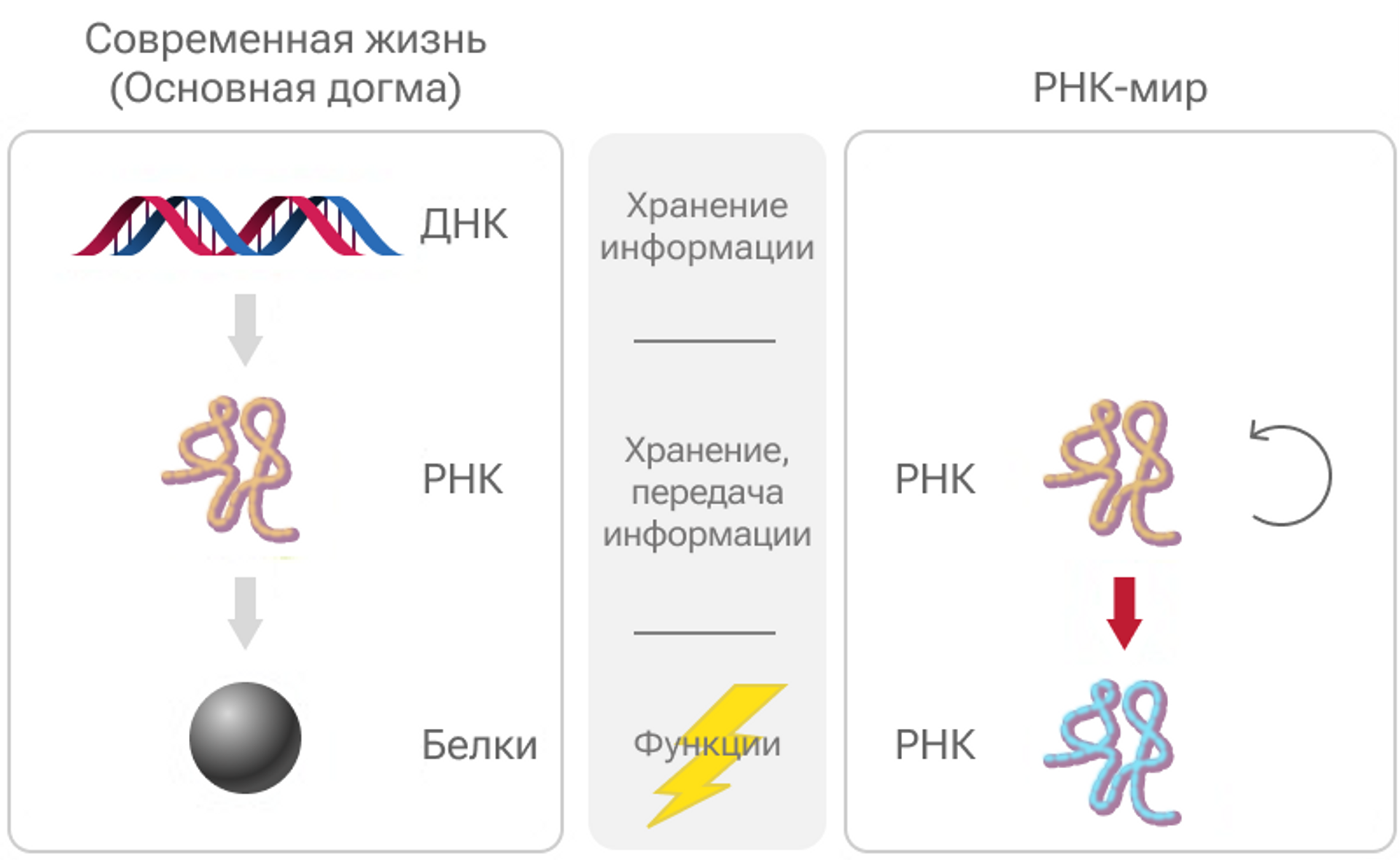
«
“The origin of life is a very rewarding topic, because thought works, but there are no witnesses. And none of us were present. Like this. Food for thought.» (Academician A.S. Spirin)
— How did he think to prove this?
— It was important for him to build a logically consistent concept that is based on known facts.
— And the experimental evidence?
— Nobody knows how to get them. As soon as the experimenter gets involved, this is no longer a natural process. But the natural one lasts so long that it cannot be reproduced in the laboratory. This is a logical paradox. So far, only individual aspects of the concept are being tested.
You can go by the opposite. Other molecules are not suitable for the primary world. They are not capable of reproducing, evolving, spontaneously forming structures, or possessing the necessary properties. If we assume that life occurred naturally and was not given from above, then the only biopolymer we know of that can do all this is RNA.
Spirin’s concept is well thought out and logically consistent. For us it is the most convincing. The most interesting thing is that it was entirely developed in Russia.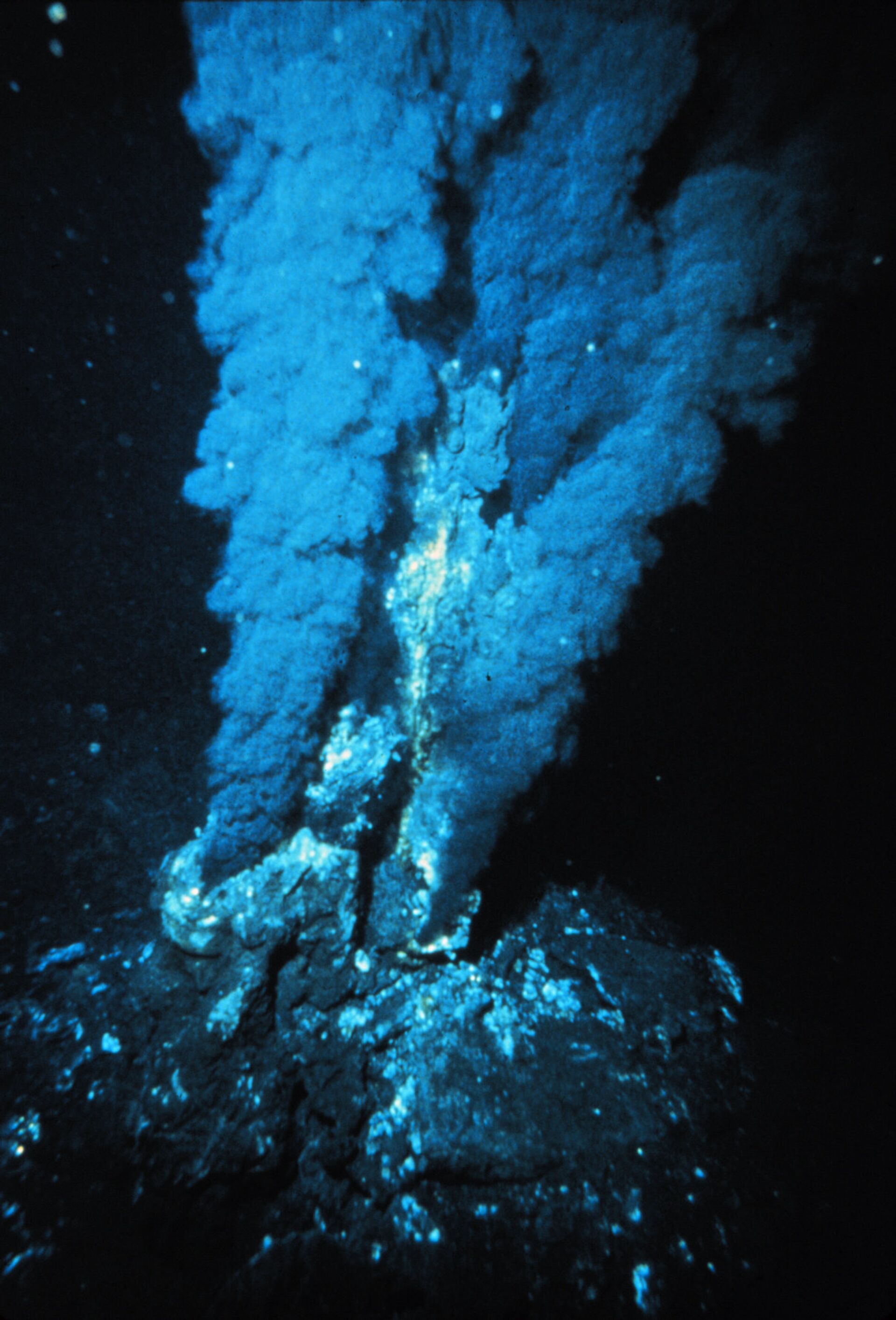













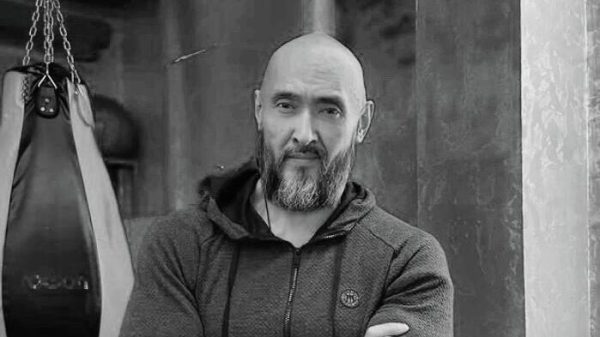


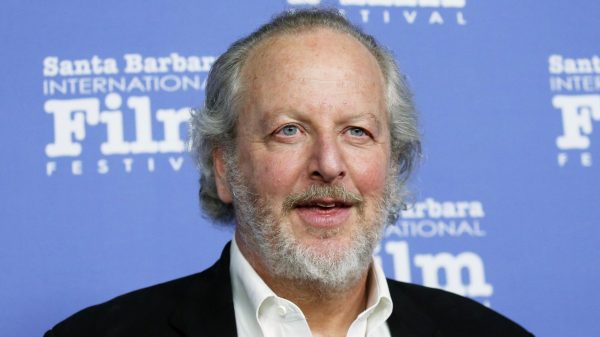









































Свежие комментарии